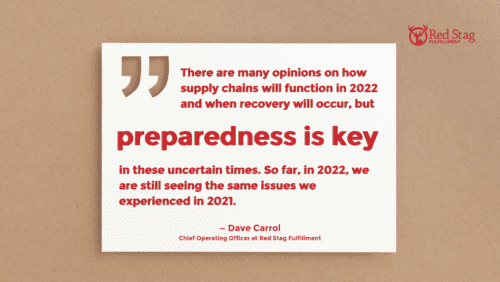Products with low inventory turnover rates can increase your storage and holding costs, leave you saddled with obsolete stock, and place a drag on your business growth. The first step to solving the problem is understanding how to identify slow-moving inventory, and the second is figuring out what to do with it. And don’t forget to reach out to your eCommerce fulfillment provider for help.
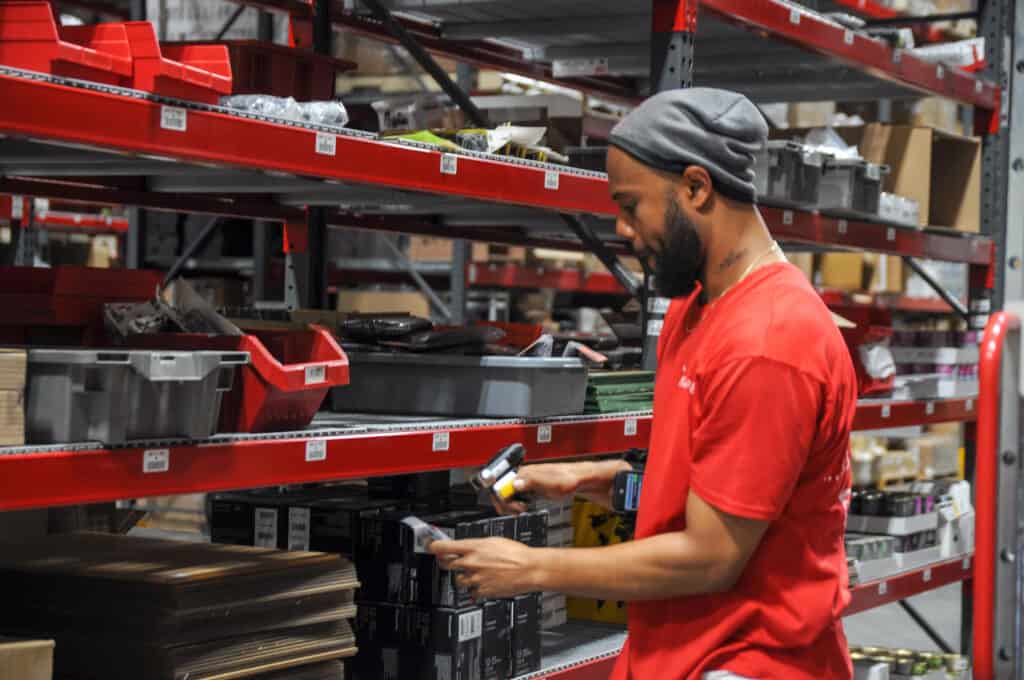
Use your 3PL to help you identify slow-moving inventory
The key to identifying slow-moving items is inventory visibility. Poor inventory management or low levels of inventory accuracy make it hard to find and solve inventory turnover issues. When you work with a top 3PL services provider, you get an inventory management partner who can support your efforts to improve stock turn. The best fulfillment companies will want to help you figure out how to identify slow-moving inventory because 3PLs are in the business of filling orders, not warehousing dead stock.
Here are some of the ways that a 3PL like Red Stag Fulfillment helps eCommerce companies identify and fix inventory turnover issues:
- Our inventory accuracy rate is far above the industry average. In 2021, we provided 99.991% inventory accuracy for our clients.
- Zero shrinkage is one of our order fulfillment guarantees, so we pay the replacement cost if anything is lost or damaged — and, because of that, we track every count of every SKU in our warehouses with precision.
- Our robust integrations give you the inventory visibility you need to manage each SKU.
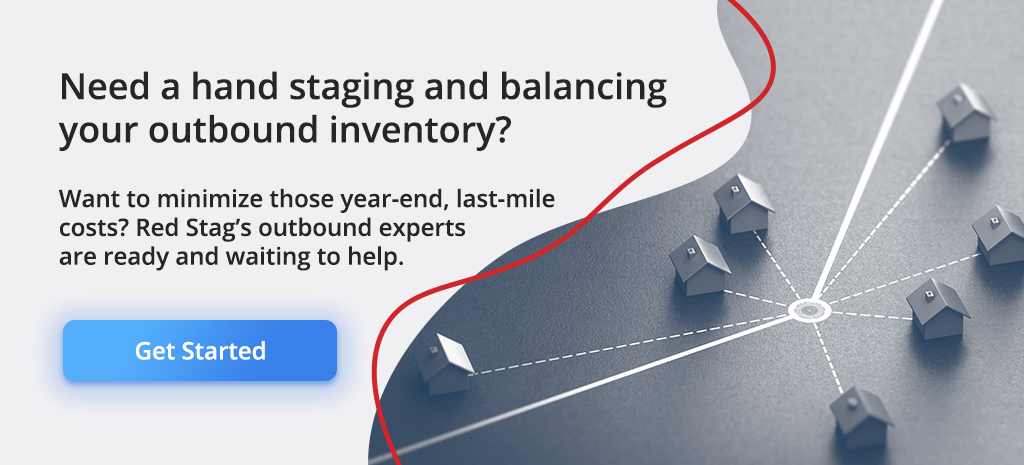
How to identify slow-moving inventory
The definition of “slow-moving” is different for different products. For example, an online retailer selling fast fashion might consider a SKU slow-moving if a complete inventory turn is longer than 30 days. For a food item, expiration dates are the guidelines for how to identify slow-moving inventory. Durable goods such as sporting equipment, furniture, or electronics can often spend longer in the warehouse before you label them slow-moving.
Overarching inventory metrics won’t give you the information you need to identify slow-moving inventory. You need inventory management software that supports reporting by SKU. Precision in determining which items need help to sell will point you to the correct solutions to the problem. Plus, you may want to define slow inventory turnover differently for different SKUs in your product line. For example, if you sell a line of fitness products that includes barbells and protein powders, you’ll need to set different turnover goals for each product type.
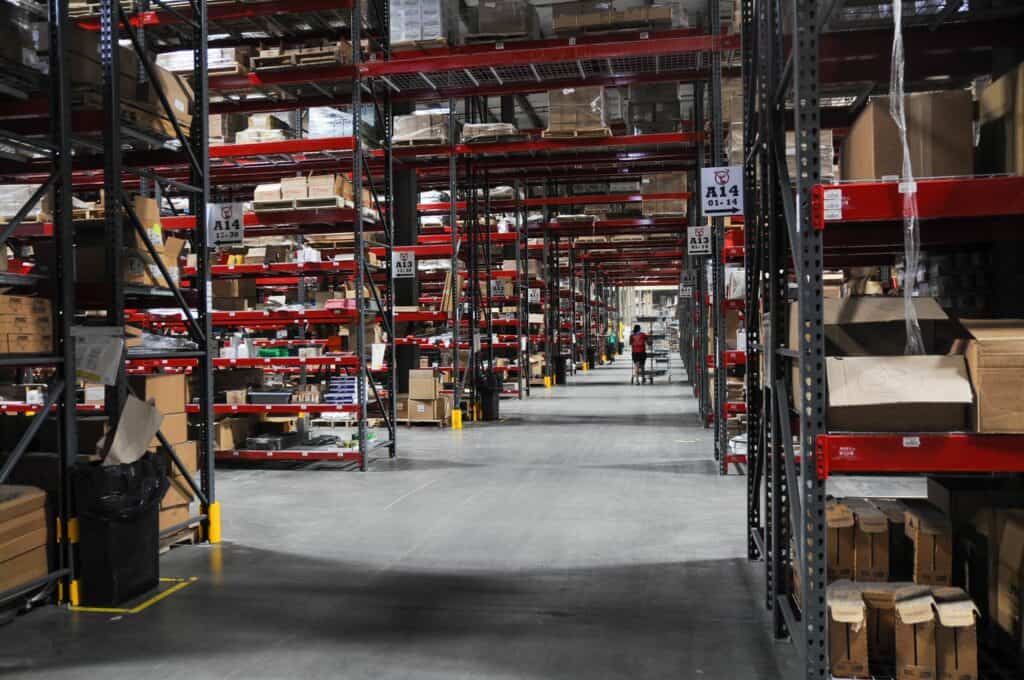
3 problems with low inventory turnover
Understanding how to identify slow-moving inventory is critical because it harms your business. Here are just three of the ways that items with fewer inventory turns can create a drag on your operations and your growth.
1. It ties up your capital
Each slow-moving item on a warehouse shelf represents a little piece of your business capital that’s not liquid. Inventory velocity is critical because your stock provides profits from every turn, which you can invest in marketing, product development, and new customer acquisition. The more products sitting on the shelf, the less money you have to enhance your business.
2. It can lose value or turn into dead stock
The longer a product sits on a shelf, the lower its value is likely to be. Consider a cellphone. As soon as the new model comes out, the older model drops in price. You just lost $100 or more of potential profit for every older model you have in stock.
In a worst-case scenario, aged inventory can turn into deadstock. Changes in consumer preferences, innovations in the product space, or changes in fashion can render SKUs unsaleable. In that case, your slow-moving inventory becomes a total loss.
3. It increases your storage costs
Another reason slow-moving items have lower profit margins is a higher cost of goods sold due to storage costs. If you use a 3PL, SKUs that sit on the shelf for too long (usually more than six months or a year) may be subject to long-term storage fees. Those are extra charges above the standard storage costs.
Even if you do your own warehousing, you’re losing money on slow-moving inventory. Let’s take an example of a SKU where you have 100 units in stock with a profit of $2 per unit. The per-quarter storage cost for the space taken up by the SKU is $15. If you have three inventory turns, the storage cost per unit is $10 divided by 300, or 5 cents per unit. If you have only one inventory turn in a quarter, you must divide $10 by 100, and the cost per unit is 15 cents. That extra 10 cents shaved off your margin may seem small, but that’s a 5% reduction in your profit margin. And storage is only one incremental cost of slow-moving inventory.

Can slow-moving inventory serve your business?
There are, surprisingly, some instances where you might purposely stock a slow-moving item. For example, suppose your online store sells premium kitchen appliances. You have an excellent blender that retails for $289, but sales are slow. Then you add a top-of-the-line blender with lots of bells and whistles for $459. The model selling for $289 looks like a bargain, and your sales increase.
You probably won’t sell many fancy blenders, and you might keep only a small stock on hand of that model, but your slow-moving item serves as a sales booster for the product you want to sell in quantity.
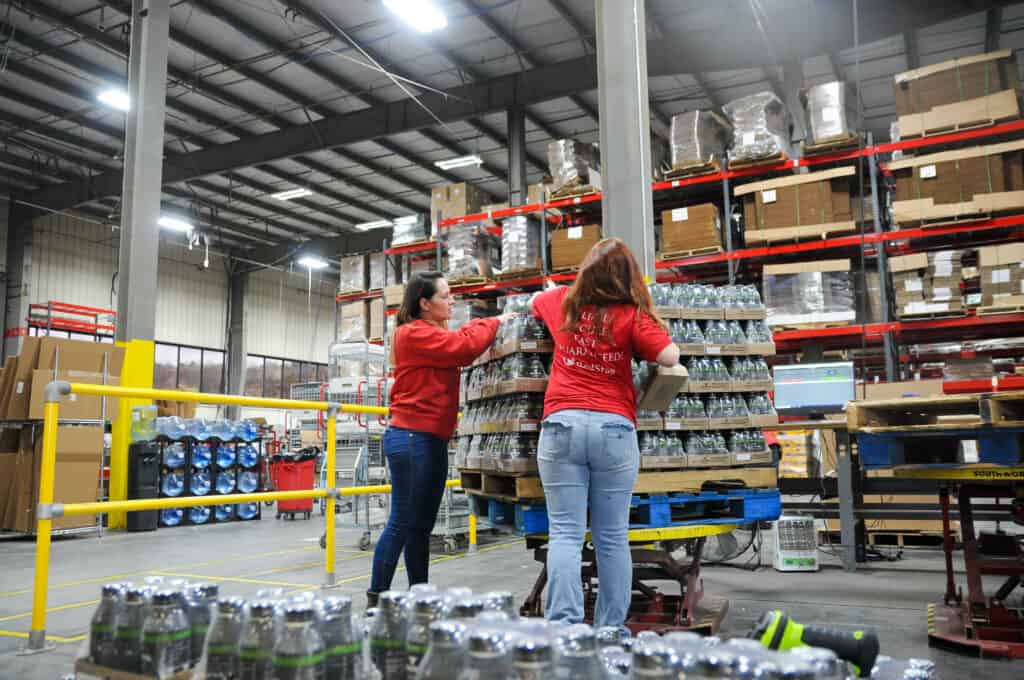
Solving an inventory turnover problem
Many eCommerce enterprises define slow-moving inventory as SKUs that diverge from their demand forecasts. Once you determine that a product isn’t performing as forecasted, here are your next steps.
Identify the root cause
You can’t solve an inventory turnover problem if you don’t know what’s causing it. Slow-moving inventory can be caused by:
- New competition that’s grabbing your market share
- Not reaching the target demo with your marketing
- Innovations in the product space that render the item outmoded
- The price point is too high (or too low)
- Economic downturn affecting the market as a whole
- Seasonal differences in sales
- Faulty sales projections
The solution you pursue needs to match the root cause of the problem, so you need to answer this question before moving forward.
Develop a plan based on the root cause
Next, craft a plan to address the problem. If you’re losing to a new competitor, you might win back customers with an aggressive marketing campaign or discount offers. If innovation has made your item less desirable, that’s a problem for your product development team. A seasonal downturn may indicate the need to adjust your restock levels for different seasons. If your inventory forecasting doesn’t measure up, it might be time to upgrade your inventory management software.
Sometimes, a SKU may be obsolete, and you’ll need a plan to deal with the problem. You might reduce the price to move out stock or donate it if you can’t sell it. You might take a hit, but at least you’ve identified the slow-moving inventory item, preventing future losses.
Reevaluate SKU turnover rate
After you put your recovery plan in place, monitor the performance of the slow-moving item every quarter to see if your solution is moving the needle on inventory turnover.
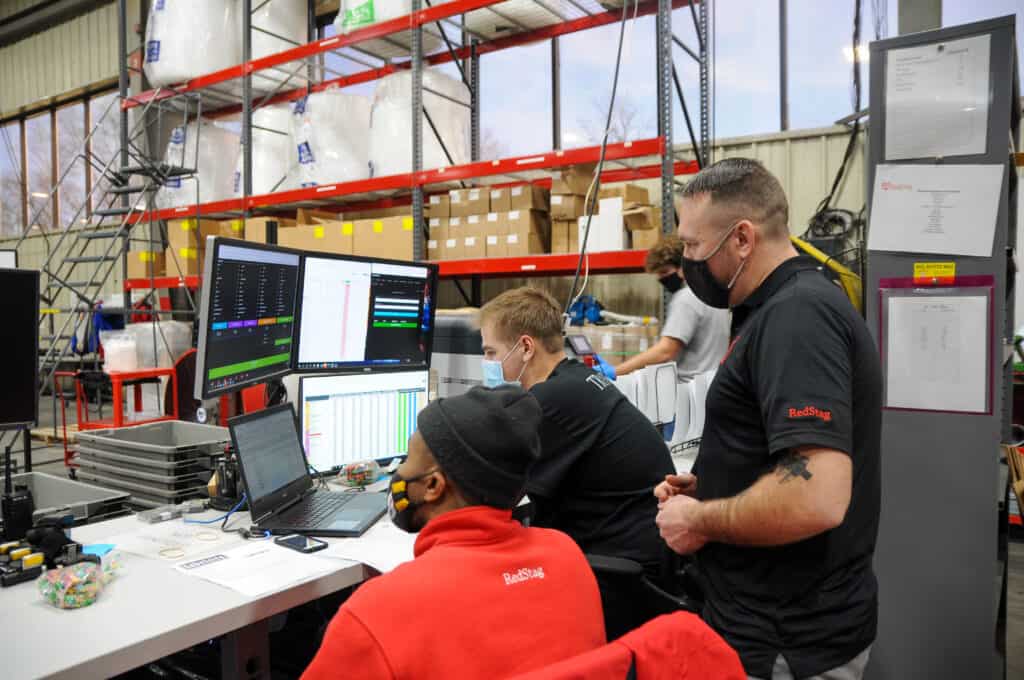
Best practices for preventing slow-moving inventory
Learning how to identify slow-moving inventory is essential, but taking steps to prevent it is even better. Here are three best practices to keep your stock moving.
Establish metrics to identify slow-moving inventory
Use data to determine the metrics that define “slow-moving” for each SKU in your product range. If you’re unsure how to set these metrics, reach out to your 3PL for support. Your fulfillment company works with many eCommerce companies and can share knowledge based on a broad experience of warehousing and inventory best practices.
Once you have metrics in place, you’re ready to quickly identify slow-moving inventory before a small overstock turns into an inventory tsunami.
Focus on inventory forecasting
A robust inventory forecast based on historical sales along with economic and market trends is your best defense against over-ordering inventory. No forecast is perfect, and unforeseen events can add chaos to even the best inventory management plan. However, reliable forecasting is an excellent tool to help you plan your supply chain to optimize inventory turnover.
Create a feedback loop between operations, sales, and product design
ECommerce product development needs to move at the pace of the market. Instead of siloed teams, foster communication between operations management, sales, and product design teams. Sharing data on slow-moving inventory before it becomes a headache can lead to early solutions and better outcomes.
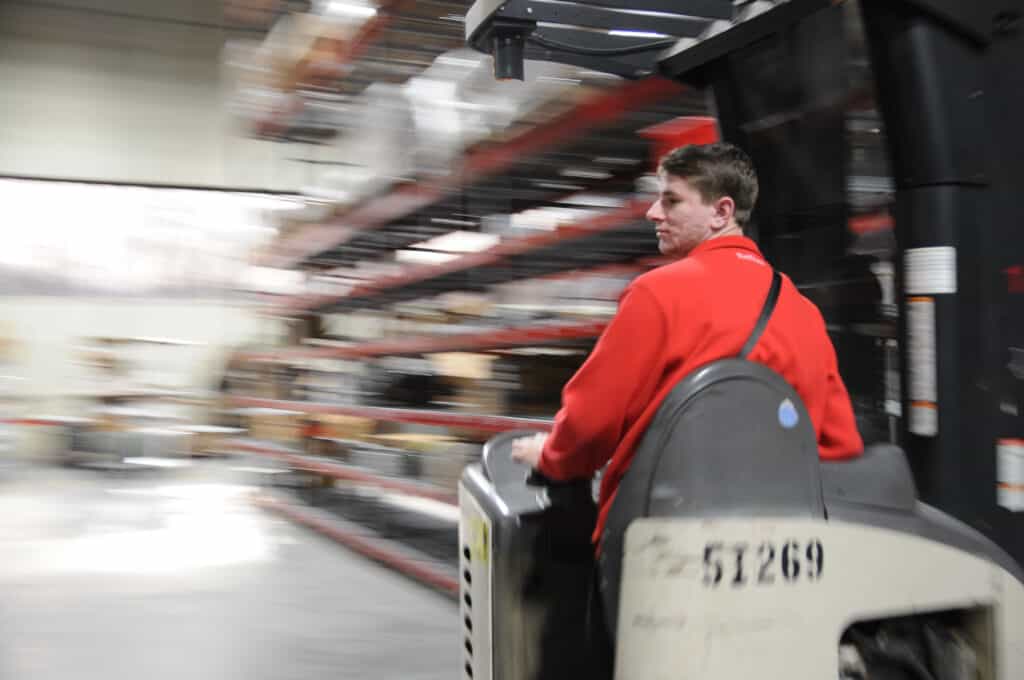
Red Stag Fulfillment helps eCommerce companies move more product
Fulfillment is the underside of the iceberg in eCommerce sales: Customers don’t notice what your 3PL does, but it makes a huge difference to their experience with your company. Outstanding fulfillment services play an underappreciated role in moving products off the shelf and increasing inventory turnover.
At Red Stag Fulfillment, we understand how critical the quality of our pick and pack services is to our clients’ success. We aim to support and nurture each online seller we work with to ensure that you aren’t stuck with slow-moving inventory. We’re here to help.

More about how to identify slow-moving inventory and improve your inventory management:







